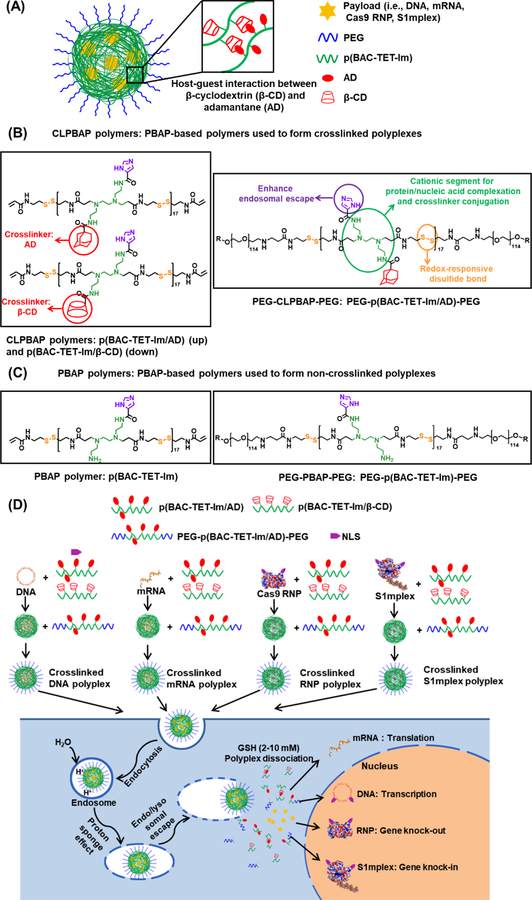Figure 1.
(A) Illustration of a CLPBAP polyplex for the delivery of various negatively charged payloads. (B) Chemical structures of the PBAP-based polymers used to form crosslinked polyplexes including CLPBAP polymers (i.e., p(BAC-TET-Im/AD) and p(BAC-TET-Im/β-CD)), and PEG–p(BAC-TET-Im/AD)–PEG. (C) Chemical structures of the PBAP-based polymers used to prepare non-crosslinked PBAP polyplexes including the PBAP polymer (i.e., p(BAC-TET-Im)) and PEG–p(BAC-TET-Im)–PEG. (D) Formation of the crosslinked CLPBAP polyplexes and their proposed intracellular trafficking pathways. CLPBAP: crosslinked poly(N,N’-bis(acryloyl)cystamine-poly(aminoalkyl)); p(BAC-TET): poly(N,N’-bis(acryloyl)cystamine-co-triethylenetetramine; Im:imidazole; AD: adamantane; β-CD: β-cyclodextrin; PEG: poly(ethylene glycol, Mw = 5000 Da); GSH: glutathione

